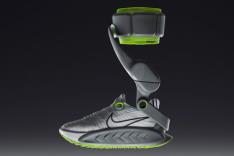
In 2010 I covered the Boston Marathon, and three days before the race, I attended the elite athlete press conference at the Fairmont Copley Plaza Hotel. There my colleagues and I filmed short interviews with almost all of the male and female contenders. When we gave our predictions in a segment that we filmed the next day, I included Kenya's Robert Kiprono Cheruiyot among my runners to watch. Although he was only 21 years old and not well known, I had been struck by the confidence he exuded at the press conference.
You might not think that an intangible factor ought to count as much as quantifiable factors such as personal bests and experience in making race predictions, but in my experience, clear signs of confidence are a reliable predictor of performance. And they were once again at the 2010 Boston Marathon. Cheruiyot went on to win the race in course-record time.
Athletes tend to think of confidence as an innate psychological characteristic. Either you're born with it or you aren't. While that's true to a certain degree, athletic confidence is largely rational and experience based. If a runner believes he can win a race, it's mainly because he proved his ability to win with the training he did before the race. As another Kenyan runner, John Litei, put it, "Training gives me proof." In Cheruiyot's case, he had spent the winter and spring outperforming his coach and training partner, 2:06 marathoner William Kiplagat, in workouts.
More: 4 Fast Tweaks to Run Like the Elites
Confidence is important enough with respect to race performance that you should make a conscious effort to increase it. Since confidence comes primarily through training, this means you need to train for confidence, or train in a way that proves you can achieve your goals.
One way to do this is to plan your training program to culminate in a few key confidence-building workouts that, by their design, are highly predictive of performance in the specific race you're preparing for. Before he ran the first sub-four-minute mile in 1953, Roger Bannister did a series of workouts consisting of 10 repetitions of 400 meters at race intensity with a couple of minutes' rest between reps. When he got to the point where he was able to run all 10 intervals in 60 seconds or less, he knew he was ready to break the hallowed four-minute barrier.
This is a good example of a confidence-building workout. Like Bannister's famous track session, all such workouts should be specific to the race goal you're aiming for yet not quite as challenging as the race itself. Here are some suggested peak confidence-building workouts for standard road-race distances.
- 1
- of
- 2
About the Author

Get ACTIVE on the Go


Couch to 5K®
The best way to get new runners off the couch and across the finish line of their first 5K.
Available for iOS | Android







Discuss This Article